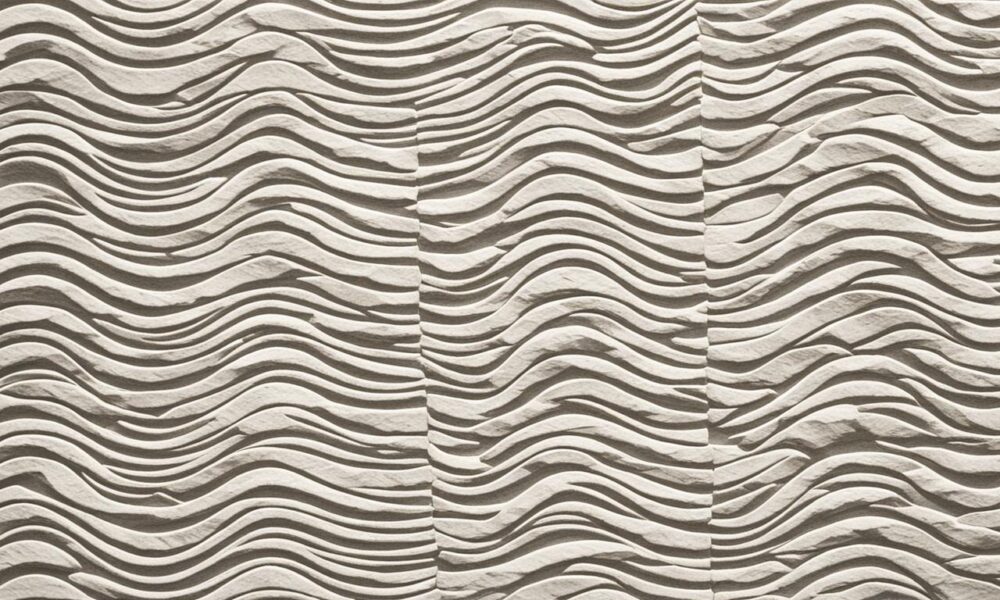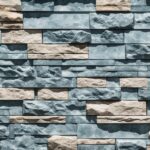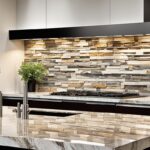Exploring New Surface Treatments for Natural Stone
Natural stone is known for its beauty and longevity. It often needs the right finish to look good and work well. There are almost ten finishes to pick from1. Homeowners and builders can choose the best one for each kind of stone. These treatments make the stone look more beautiful and protect it from weather and water1.
There are many ways to enhance stone, like polishing, honing, and leathering. These are favorites in homes1. Matching the treatment to the stone’s needs—like marble’s porosity or granite’s toughness—adds beauty and life2. Also, these treatments change the stone’s texture, look, and ability to wear down. For example, a flamed finish is great for outdoors because it gives a rough texture1.
Key Takeaways
- Natural stone offers nearly ten different finish options for diverse applications1.
- Common residential finishes include polished, honed, and leathered1.
- Selecting the right finish enhances both the appearance and durability of the stone1.
- TEXTural finishes like flamed and tumbled provide aesthetic and functional benefits for specific settings like outdoor spaces and high-traffic areas1.
- Granite, known for its resilience, requires regular sealing to maintain its condition, making finish selection crucial for maintenance2.
Introduction to Natural Stone Surface Treatments
Natural stone surface treatments keep stone beautiful and functional. They make stone resist stains, moisture, and wear better. This helps them last longer and look good.
Why Natural Stone Needs Treatment
Natural stone like marble, granite, or limestone needs care to avoid damage. It can get stained or damaged by water. Each type of stain, like oil or ink, needs a different cleaning method. For example, use mineral spirits for oil stains and hydrogen peroxide for others3. Acidic things can cause marks that need professional help3.
Polished stone looks great but can be slippery outside4. It’s important to pick a finish that’s safe and suits where it will be used.
Popular Stone Types and Their Treatments
Knowing which treatments work for different stones helps keep them in top shape. Stones are either Sedimentary, Metamorphic, or Igneous3. They can also be Calcareous (mostly calcium) or Siliceous (mostly silicates)3.
The following table shows some stones and their preferred treatments:
| Stone Type | Preferred Finishes | Treatments |
|---|---|---|
| Marble | Polished, Honed | Impregnating sealers (68%)5, Enhancers (29%)5 |
| Granite | Leather (only for granite)4, Polished | Oil-based stain removal, Flamed finish for outdoor protection4 |
| Limestone | Honed, Sawn (matte tone)4 | Hydrogen Peroxide for organic stains3 |
Choosing the right treatments makes stone last longer and look better. Textured finishes are good for busy areas. They help prevent slips and keep the look5.
New Surface Treatments for Natural Stones: What’s Available?
Modern stone processing has changed the game, making cool new products for our needs. Using high heat and gas, we can now make fireproof panels. They not only look good but are safe too. Techniques like the leathered finish keep the stone’s true color, making it look better and last longer6.
We’ve also got refinishing methods that make surfaces rough but safe to walk on6. These are great for outdoor use. Bush-hammered finishes are a hit for paths since they prevent slipping6. Brushed treatments make stones’ colors pop while keeping the surface a bit rough. This mix of beauty and practicality is what we love6.
Different stone finishes work best for different spots, like micro-sanded finishes for outdoor tiles for extra safety7. Flamed finishes are perfect for slippery places7. Tumbled finishes give a cool, old look to paving stones, adding character and charm7.
We’ve got many ways to keep stone surfaces looking good and working right. The honed finish is smooth and classy for a refined touch7. A polished finish makes the stone shine beautifully, showing off its natural patterns7. Acid-washed finishes add texture, giving the stone an interesting and unique look7.
Here’s a detailed comparison of different natural stone surfaces and their ideal applications:
| Finish Type | Key Feature | Ideal Application |
|---|---|---|
| Leathered | Retains stone’s color | Countertops, indoor surfaces |
| Flamed | Rough, non-slip surface | Outdoor pavements, walkways |
| Brushed | Enhances stone’s natural colors | Indoor and outdoor surfaces |
| Bush-Hammered | Small indentations for grip | External paving, walkways |
| Sawn | Lightweight, matte tone | External paving, driveways |
| Polished | Glossy, mirror-like | Indoor surfaces, decorative elements |
| Honed | Smooth, non-reflective | Floors, walls |
| Acid-Washed | Small pitted indentations | Outdoor surfaces |
| Micro-Sanded | Increased slip resistance | Outdoor tiles, pavers |
| Tumbled | Weathered, rustic | Travertine, limestone, marble pavers |
Advantages of Modern Stone Surface Treatments
Modern stone treatments have made natural stone more durable and longer-lasting. They deal with common issues using new methods. These improvements help stone keep its beauty and take on everyday use.
Improved Durability and Longevity
Modern coatings make natural stone stronger. They make stone surfaces less likely to absorb stains and more durable8. This is great for places that get a lot of use. Polished finishes also make stone’s color and patterns pop, adding beauty8.
New stone sealers protect deeply but let the stone breathe. This stops damage from water and weather. Honed surfaces are also easy to clean and hide marks, making them great for active homes8.
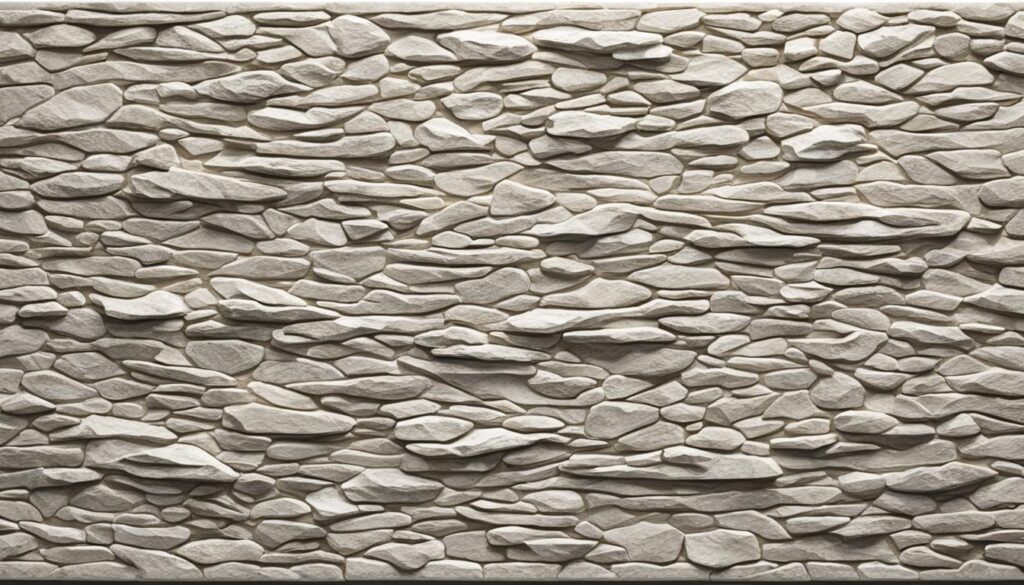
Leathered finishes give stone a unique, warm look8. Flamed finishes are not slippery and look natural, perfect for outdoor areas where looks and safety matter8.
Stone treatments are also good for the planet. They make stone last over 100 years. This shows a real effort to protect the environment9.
Modern treatments work well for lightweight stone veneers used in cladding and walls9. They meet design and strength needs without losing quality. Honed finishes are good for places with lots of foot traffic, offering safety and easy upkeep10.
Today’s treatments consider each stone’s unique traits, improving strength and beauty10. This makes modern stone sealers and coatings a top choice for anyone looking to enhance their space.
Comparing Traditional and Modern Stone Surface Treatments
Traditional stone treatments aim to keep the stone’s original look. Techniques like splitting with hammers create a unique texture known as crackle finish. These methods enhance the stone’s raw beauty and charm.
Traditional Techniques
Bush hammering and flaming are used before installing stone floors. They make the floors safer to walk on11. Splitting stone with hammers preserves its natural appearance, appealing to those who love an authentic look.
Modern Techniques
Modern methods use advanced tools for better precision. Diamond saws and resin pads ensure smooth finishes. Techniques like laser treatment keep floors slip-resistant without losing shine11. Brushed surfaces are popular for their soft touch and ease of cleaning11. Chemical treatments further improve floor safety by making them less slippery11.
For modern surface treatments, flame injection creates fireproof panels for businesses. Techniques that age stone provide a rustic look while being functional11.
Let’s look at how these techniques compare:
| Technique | Description | Properties |
|---|---|---|
| Organic Splitting | Creates crackle finish by manual hammering | Authentic appearance |
| Bush Hammering | Mechanical method for enhancing anti-slip | Optimal anti-slip properties11 |
| Machine-Cut Polishing | Uses diamond saws for precision finishes | High precision and smooth finish |
| Laser Treatments | Provides anti-slip properties while retaining gloss | Slip-resistant, retains original color11 |
| Brushed Surface | Provides a soft velvet touch | Easy to clean and maintain11 |
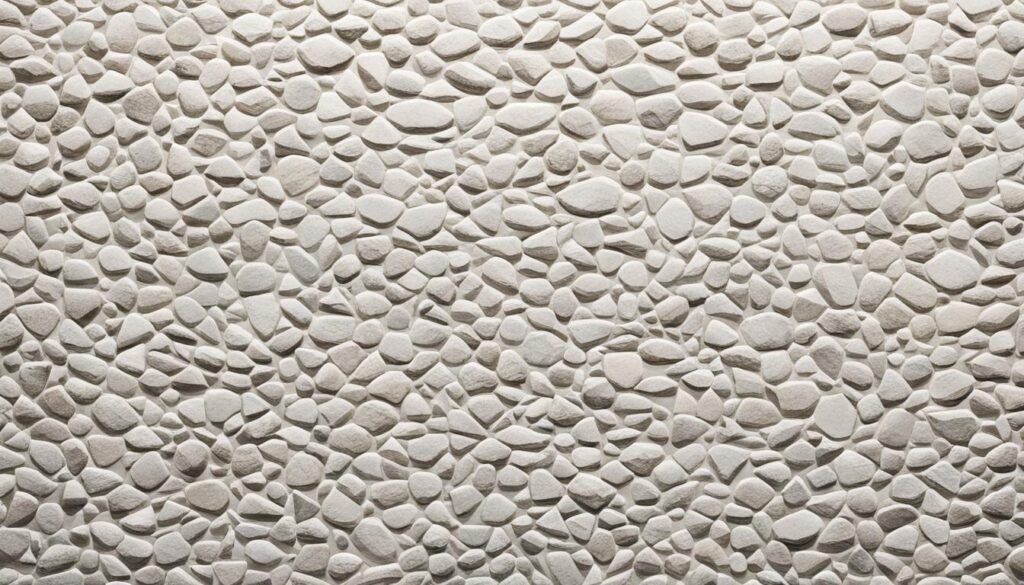
Application and Maintenance Tips for Treated Natural Stone
To keep treated natural stone looking good, proper care and regular upkeep are key. Depending on the treatment and use, care levels vary. Follow the maker’s advice and pick the right products to keep your stone beautiful and strong.
Application Guidelines
Stick to the manufacturer’s instructions when treating stone. Sealing is a must for all stone types to avoid stains, especially for new marble, granite, and limestone12. You can choose from penetrating sealers or stone enhancer sealers12. Always do a spot test before applying it entirely12.
Products like MORE™ AntiEtch™ protect against etches and stains from acidic items13. Sealants need reapplying as per warranty recommendations to keep the protective layer strong. Sealers used for upkeep usually have a 4 to 15-year warranty13.
Maintenance and Care
Keep stone surfaces clean and remove spills quickly to avoid stains. Use strong stone cleaners without acid or bleach to avoid damage12. A specific poultice is great for stains, and fast spill cleanup is crucial12.
Sealers help stone last longer13. Follow the manufacturer’s care tips for engineered stone. When using chemicals, wearing gloves and safety glasses is a must for safety12.
Below is a comparative table highlighting essential points for effective application and maintenance:
| Aspect | Guidelines |
|---|---|
| Sealing | Strongly recommended for all natural stones; use penetrating/impregnating sealers12 |
| Cleaning Agents | Avoid acid and bleach; use heavy-duty stone cleaner and degreaser12 |
| Stain Removal | Immediate spill cleanup; use stone-specific poultice for stains12 |
| Etching Prevention | Apply products like MORE™ AntiEtch™ to prevent etching13 |
| Maintenance Frequency | Follow manufacturer’s warranty and reapplication guidelines, typically every 4 to 15 years13 |
| Safety | Use safety glasses, respirators, and gloves when handling chemicals12 |
Conclusion
Exploring new surface treatments for natural stone has shown us many options. These options meet various tastes and needs. From age-old methods that highlight the stone’s texture to modern technologies that boost its strength and safety, the world of stone treatment is always changing. Choosing the right treatment and applying it well, plus keeping the stone surface clean, helps make natural stone last longer and look better. Advanced methods, like impregnations, are great for guarding against UV rays, cold, and moisture, all while letting the stone breathe14.
Natural stones used outside face issues like moisture, weather, and stains14. To protect against stains from moisture, special coatings and impregnations are applied14. UV rays, weather, and acid rain can damage softer stones such as marble and limestone14. Impregnations used often can strengthen stones against these challenges, keeping their beauty and strength14. For deeper understanding, check out natural stone problems and solutions.
In conclusion, modern stone treatments and regular upkeep can greatly improve natural stones’ lifespan and looks. Using impregnators designed for particular needs helps keep stones’ natural appearance while guarding against many harmful substances14. By adopting these new techniques, both homeowners and experts can keep their natural stone looking new and timeless.
FAQ
Why do natural stones need surface treatments?
What are popular stone types and their specific treatments?
What are the latest surface treatment options available for natural stones?
What advantages do modern stone surface treatments offer?
How do traditional and modern stone surface treatments compare?
What guidelines should be followed for the proper application of stone treatments?
What maintenance practices are recommended for treated natural stone surfaces?
Source Links
- Natural Stone Finishes – Great Lakes Granite & Marble
- What Are Natural Stone Countertops? Maintenance, Finishes, Quality
- Learn About Cleaning Products for Natural Stone
- 10 types of natural stone finishes
- Glossary of Natural Stone Finishes | Stone and Surface Specialists
- Different surface finishes for natural stone | Scandinavian Stone
- 10 Types of Natural Stones and Finishes
- Pros and Cons of Stone Finish Options | Cosmos Surfaces
- 5 Reasons to Use Natural Stone – Use Natural Stone
- Blog – Updated: Polished vs. Honed Natural Stone – Which Should You Choose?
- Surface Treatments and Stone Finishes
- Natural Stone Tile Step-by-Step Care & Maintenance
- Learn How to Care for and Maintain Stone Countertops and Slabs
- Natural Stone: Problems and Solutions for the use in outdoor areas

